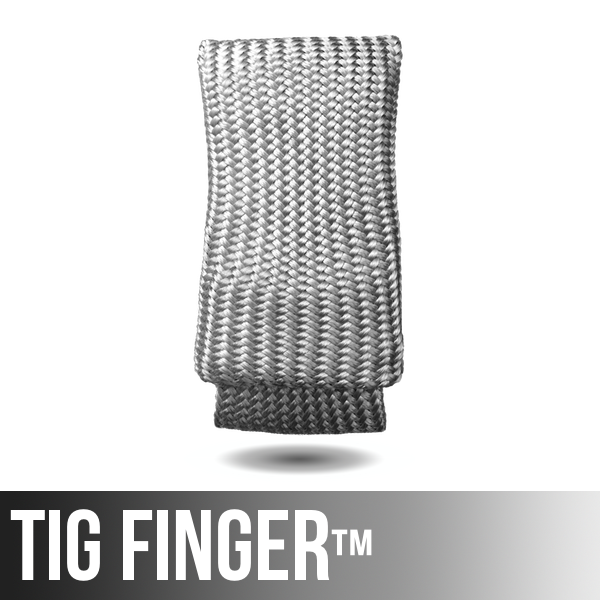
Click here to subscribe to my Video of the Week!
AC balance is a feature on a lot of ac/dc tig welders that allows the user to tweak the arc to different applications.
AC balance for aluminum welding actually adjusts the percentage of negative and positive current within the Alternating current.
More negative gives more penetration and lets you weld aluminum with a tapered electrode.
more positive gives more cleaning action but also heats up and balls the tip of the electrode.
Miller, Lincoln, and several other manufacturers display AC balance as a number that indicates percent of negative.
for example , a display of 70 would indicate 70% electrode negative….or 70 % of each alternating current cycle is on the negative side.
but other manufacturers display as a percentage of positive …
Still others like the new Everlast 210ext display ac balance is percentage either side of a 50/50 balance where a reading of -30 indicates 30 % + 50% .so a reading of -30 is equivalent to 80% on a Miller or Lincoln. Weird huh?
Its a shame that there is no international standard. But that is the free market place.
Eventually, a manufacturer will devise a simple and intuitive way to display and adjust AC balance.
until then, its important to understand AC balance.
Understand this….if you are working with a new tig inverter that has the AC balance feature for aluminum welding, the electrode will heat up and the point will ball when you add more electrode positive.
This is how you can tell the way the manufacturer designed the machine….so if your electrode is balling, try setting the AC balance in the other direction until you achieve a clean puddle without excessive electrode balling.
( As always, feel free to visit us at our sister site, WeldingTipsAndTricks.com. )
Click here to subscribe to my Video of the Week!








November 15, 2024 at 5:07 AM
Hey,
Thought this might help:
http://randyleeper.e-agents.com/customRedirect.aspx?url=https2F%2Fprodentim.com%2Ftext.php26shield%3D2412a6hyl5k8lnbbxcnbpoqdf0&pp=376637
With gratitude,
Hilda
September 17, 2020 at 5:53 PM
news platform
July 9, 2014 at 1:16 AM
Wonderful blog! I found it while searching on Yahoo News.
Do you have any tips on how to get listed in Yahoo News?
I’ve been trying for a while but I never seem
to get there! Thanks
December 6, 2013 at 6:22 PM
Hey Jody, I am currently doing an introductory TIG welding course on aluminum and am having problems with oxidation. I am welding beads onto 1/8″ plate at about 85 amps and 70hz but need the ac balance turned right up to, well +30 on the machine to actually get a clean puddle. My instructor blames the filler, and there could be some truth to that as one length of filler would weld lovely and the next would come out like there was no cleaning action at all. On open corner joints sometimes I was unable to get it to break through the oxide before the joint started to sag. Any advice?
Thanks for everything you do, you do an amazing job.
John.
December 7, 2013 at 4:23 AM
As Jody says, it maybe that you are adjusting the ac balance the wrong way depending on the machine notation. You can easily eliminate the filler wire by just observing the tip balling as Jody suggests or doing a bead pass on a thick sheet of aluminium but without adding filler wire just to see if you are getting good cleaning action (removal of oxide layer). Adjust the balance in one direction and see what happened to the clean width. Wider is more positive percentage. Also what electrodes are you using? These should be 2% Lathenated or Zirconiated (white tip)for best AC performance. Don’t forget that the cleaner the part you are welding the less AC positive percentage you need (or can get away with)which also means less balling and most importantly you can use a lower current setting for the same job. As you may expect you need to use new, clean filler wire as the oxide coating of this also needs to be stripped off as you weld. Make sure it is the right filler wire for the aluminium you are welding as well.
December 7, 2013 at 6:20 AM
Thanks for the response. The tungsten is 2% ceriated I believe -gold tip- which the college use for everything and it was melting above 95 amps. Some beads were perfectly clean and were run with the cleaning action reduced but I was finding that I could lay one really nice bead, strike up to start the next and there would be black crap in the puddle and it felt like it wasn’t always breaking the oxide layer. I couldn’t tell you what filler we were using other than it has been around a while, also they don’t use gas lenses just a standard perforated collet body. On my DC machine at home I always use a gas lens and I found it a massive improvement, but a no 8 cup with 15 l/pm should be fine without I’d have thought or does a gas lens really help on aluminium? Either way the reason I emailed is that I would have expected to get a clean puddle with the AC balance turned right up, even if the filler was old, the aluminum was new, but I couldn’t…well not every time.
December 7, 2013 at 12:43 PM
I would not use Ceriated tungsten on anything other than very thin material where current is kept low. They are not suitable for medium or high current needed for Aluminium AC welding, that is a known fact. Your college lecturer should know that! Use Zirconiated (best) or 2% Lanthenated as used by Jody. I use a gas lens as it allows you to run with the electrode protruding further from the cup or run with less Argon flow than without a lens as the flow becomes laminar rather than turbulent. Turbulent flow does not provide good elimination of oxygen around the weld pool. If I were you I would take in your own TIG torch parts to the college and then take them home with you when you finish up. Only use one set of torch parts for one type of material, i.e. keep sets for Stainless, Carbon Steel and Aluminium, don’t mix them up.
You need to find out what filler wire you are using and what is the base material you are welding, its crazy to not to have any idea particularly when welding Aluminium as they may be completely incompatible. You must use compatible materials. There is lots of information available to select the right filler for the base material you are wanting to weld, just Google the subject.
15 lpm is high for TIG, I would use that flow for MIG welding! I typically set 8-10 lpm and never get any porosity in the weld.
Black crap in the puddle is a know issue with Aluminium welding and is normally attributable to the arc breaking down and spitting, usually because you have momentarily bridged the arc with the filler but in your case it may be due to the Ceriated tungstens you are using or unsuitable filler wire.
If you believe the problem is due to the filler wire you are using can you link the bad welds to filler wires that are particularly oxide coated? The filler wire should look bright and shiny.
Hope this helps. I did 3 years at college (evenings) learning how to weld and getting the qualifications for TIG and MIG and since then practiced and practiced and more practicing. I have a degree in electronics and control systems (day job) but I just love welding and now have my own fabrication business that is being built up slowly to keep me occupied during retirement – much more fun than messing about with electronics and software, albeit not so well paid.
October 26, 2012 at 10:43 AM
Hi Jody,
Great educational videos. I notice you use 1.5% and 2% Lanthenated electrodes for most jobs (from your other videos) but the higher percentage lathenated tungstens are not that easy get hold of in the UK. What are you using for this video? I use white tip zirconiated tungsten for AC Aluminium as these appear to be the recommended electrodes for Aluminium welding and seem easier to purchase. It was interesting to know that there are some bad lenses which result in poor argon flow characteristics, I have been a bit sceptical of mine at times. I was also interested when you mentioned flow rates of 10 – 15 lpm while using a lens as I was led to believe you can use a lower flow rate when employing a lens, i.e. down as low as 8 lpm. Finally, have you come across Electrode Preheating when using AC machines? My Murex TradesTig AC220a has this feature but the manual does not really describe its attributes. It has a settable value of between 80% and 120% and default is 100%. Thanks again for your excellent work in producing these videos.
John
June 7, 2012 at 5:22 PM
Great explanation. Have struggled with this for a long time. The light has finally just come on.
Thanks
June 5, 2012 at 10:40 PM
good job on how AC balance works, you do a great job.
June 5, 2012 at 10:19 PM
Welding aluminum has always been a real challenge for me and this video really helped me understand what the puddle and surrounding area should look like (not to mention the arc) during the process. Thanks!!!! I need to look around on your site and see if you’ve addressed the do’s and don’ts of grinding/shaping the electrodes for aluminum. U da man!
June 5, 2012 at 1:36 PM
This “AC Balance Video” was especially helpful and as always, well done.
I just discovered the “Tags”, also very helpful.
I am enjoying and learning as I watch your shop evolve over the last couple years.
Thanks for what what you do Jody, thanks for sharing.
CptJack